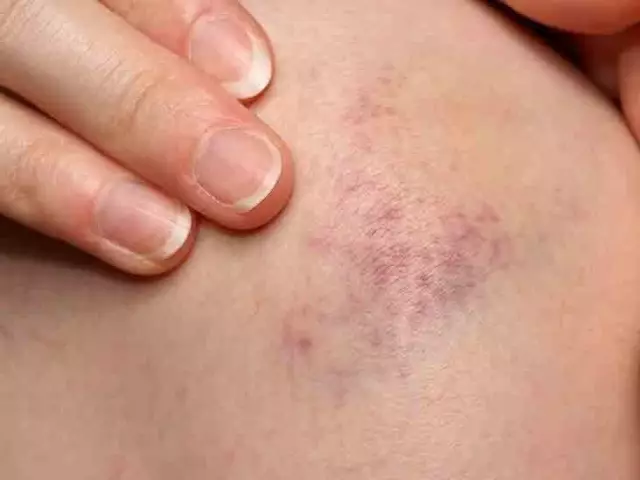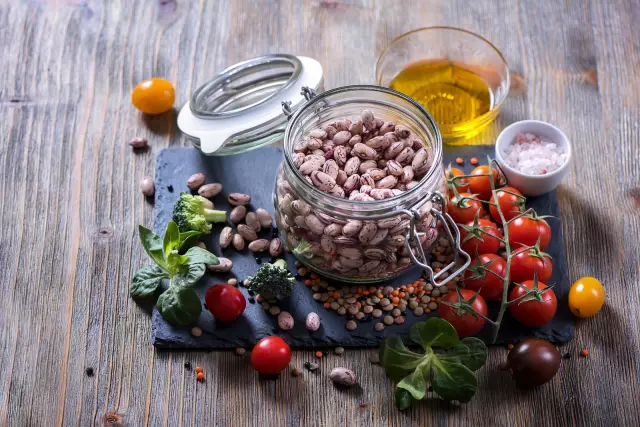- Author Rachel Wainwright [email protected].
- Public 2023-12-15 07:39.
- Last modified 2025-11-02 20:14.
Vegetative-vascular dystonia
Brief description of the disease

Before talking about vegetative-vascular dystonia (VVD), it is necessary to say a few words about the human autonomic nervous system. It performs several important functions at once, in particular, ensures the full operation of all major life support systems. The vegetative part of the nervous system is responsible for the regulation of heart rate, blood pressure, body temperature, and monitors the activity of biochemical processes. At the slightest change in external or internal conditions, the autonomic nervous system triggers controlling and compensatory mechanisms. That is why, at the right time, our breathing quickens, the tone of the blood vessels changes, and mental activity is activated.
VSD syndrome, the symptoms of which are extremely diverse both in origin and in manifestations, is a group of disorders that disrupt the normal functioning of the autonomic nervous system and introduce undesirable changes in the neurohumoral regulation of autonomic functions. These disorders are observed in neuroses, hypodynamia, in puberty and in other situations associated with physical and mental fatigue. As a rule, vegetative-vascular dystonia does not pose a threat to human life, but it has a significant effect on his performance, reduces resistance to emotional stress, leads to the development of secondary diseases and therefore requires timely, qualified treatment.
Causes of vegetative-vascular dystonia
All the factors provoking the onset of VSD? can be divided into several main groups:
- psycho-emotional reasons - sleep disturbances, mental overload, strong nervous excitement;
- spinal disorders - hernia, osteochondrosis, functional blockade of segments, muscle imbalance;
- intoxication of an exogenous and endogenous nature;
- chronic diseases - when diagnosed with VSD, symptoms of the disease often appear after damage to the cardiovascular, hepato-biliary and bronchopulmonary systems;
- metabolic disorders - in particular, the water-salt balance or the balance of trace elements;
- dysfunction of the endocrine system - pathology, age-related changes.
Types of VSD
The hypotonic type of vegetative-vascular dithonia develops in people who have been experiencing serious psycho-emotional disorders for a long period of time. This form of VSD is accompanied by increased sweating, bluish skin tone, and low blood pressure.
In contrast to hypotonic, vegetative-vascular dystonia (VVD) of the hypertensive type leads to an increase in blood pressure. At the same time, in some patients, an increase in only the upper pressure was observed, while the lower remained at a normal level. It is also interesting that this process often occurs arbitrarily, for no apparent reason. VSD of the hypertensive type of sweat always leads to the development of hypertension. Patients suffer from nervousness, choking, poor sleep and lack of appetite. They often have migraine-like pains, attacks of rapid heartbeat, and impaired coordination. When listening to the heart, characteristic murmurs and arrhythmias are found. As a rule, hypertensive VSD, the treatment of which is often required for adolescents in adolescence, begins with a hypotonic form,eventually turning into hypertensive.
Vegetative-vascular dystonia (VVD) of the mixed type is much more difficult from the point of view of diagnosis, since with the development of this form, patients have symptoms of both hypotonic and hypertensive VVD. The mixed type of VSD is especially dangerous for pregnant women, since it often causes histosis and other functional disorders of fetal development.
Vegetative-vascular dystonia - symptoms and clinical picture
The manifestations of VSD are very diverse and depend both on the form of the disease and on the reasons by which it was caused. However, there are symptoms common to all types of VSD. Note that they can manifest themselves not only together, but also in isolation from each other. This nuance must be taken into account when making the correct diagnosis. So, the main signs of VSD:
- cardiac manifestations - palpitations, chest pain, frequent heart rhythm disturbances;
- respiratory signs - a feeling of chest congestion, rapid breathing, sudden attacks of shortness of breath;
- fluctuations in arterial and venous pressure;
- an increase in body temperature or, conversely, a decrease in it to 35 degrees and below;
- disorders of the gastrointestinal tract, abdominal pain, nausea, vomiting;
- painful urination;
- sexual disorders;
- weakness, lethargy, increased fatigue and poor performance;
- restless sleep, flinching during a night's rest.
Vegetative-vascular dystonia - treatment and prevention of the disease

So that various types of VSD do not darken your life, it is necessary to prevent them, starting from childhood. Many people believe that vegetative-vascular dystonia is an integral part of the growing process of a person, and that over time it will go away by itself. Do not flatter yourself. In the absence of adequate treatment, the VSD syndrome will accompany you all your life, and its course contributes to the emergence and development of dozens of other diseases, including serious disorders of the autonomic nervous system, changes in the structure of the brain, sexual and mental dysfunctions, diseases of the endocrine glands. That is why a timely visit to a doctor is so necessary, and that is why the symptoms of VSD are an undoubted alarm signal for every person. When diagnosed with VSD, treatment includes a wide range of measures,including non-drug methods, normalization of lifestyle, spa treatment, psychophysical training, physiotherapy exercises and physiotherapy procedures.
First of all, the patient must establish an optimal mode of work and rest for himself. A healthy, full sleep of at least 8-9 hours is required. Vegetative-vascular dystonia is often caused by chronic lack of sleep, so all the necessary conditions for quality rest should be created in the house. Do not sleep on too hard or soft mattresses. The ideal choice is a special orthopedic bed that promotes the most natural, physiological position of the body during sleep.
When diagnosed with vegetative-vascular dystonia, treatment implies an optimal alternation of mental and physical activity. To get rid of fatigue, you should attend courses of psychological relief, auto-training. Whenever possible, keep your TV watching and computer time to a minimum. If this is not possible, be sure to take breaks to rest your eyes.
Exercise and exercise. The optimal disciplines are: walking, skiing, swimming, water aerobics. Will be useful with VSD and regular out-of-town trips, tourism. You can play sports, but do not get too carried away, because first of all you need to think about pleasure, and not about victory and the results achieved. If you have vegetative-vascular dystonia, temporarily stop exercising on simulators, strength gymnastics, bodybuilding and aerobics with high jumps, since such entertainment is associated with a significant load on the cardiovascular system.
It is quite possible that with advanced forms of VSD, the patient will need drug treatment. It is carried out only under the supervision of a doctor and includes the intake of calcium preparations, vitamin-mineral complexes, nootropics, vascular drugs and antidepressants.
YouTube video related to the article:
The information is generalized and provided for informational purposes only. At the first sign of illness, see your doctor. Self-medication is hazardous to health!






